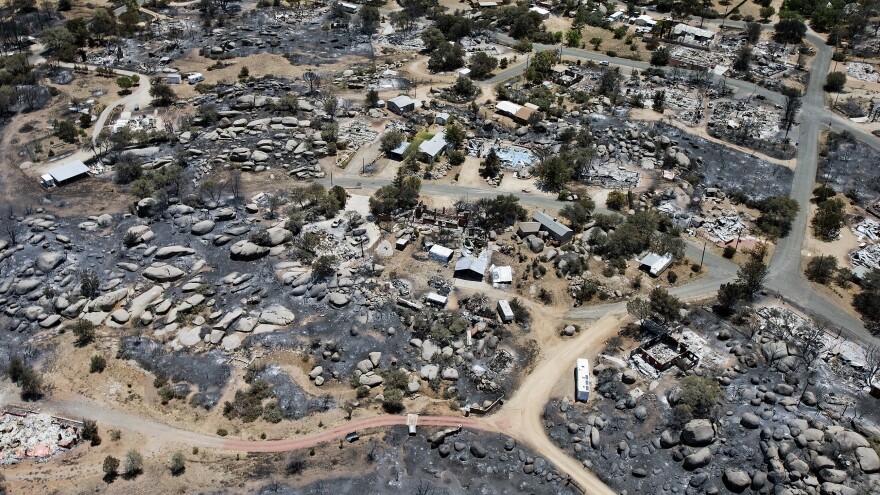Firefighter Travis Turbyfill was killed one year ago by a wildfire after he and fellow members of the elite Granite Mountain Hotshots deployed to a fire shelter in an Arizona box canyon. A fierce wind blew the Yarnell Hill Fire over the crew, killing 19.

Travis' father, David, doesn't want his son to have died in vain, and he's trying to help the U.S. Forest Service improve those shelters to withstand direct flames. All that remained of the Granite Mountain Hotshots' fire shelters — which are thin layers of foil and insulation designed to help protect firefighters as a fire burns over them — were twisted piles of crumbled aluminum and ash.
David has been conducting tests on new shelter material, and recently presented the results in a video. In it, a large metal pipe shoots fire for 30 seconds onto the current fire shelter material layered over a firefighter's yellow fire-retardant shirt. The shirt material winds up scorched and brittle.
Then he runs the same test, but for a minute longer, over a fireproof fabric Turbyfill found on the Internet. "The firefighter's shirt is completely intact," he says as he shows the camera the scorch-free yellow material.
For anyone who's seen a wildfire, the video gets your attention.
Turbyfill's metal fabricating shop is in Prescott, Ariz. There he talks statistics. In the past two decades, burn over and entrapment accounted for 25 percent of wildland firefighter deaths. In the case of the Yarnell Hill Fire, the wind pushed the blaze over the men and trapped them in a canyon.
"What I'm saying is that if you create a better fire shelter or survivable fire shelter product, that you could eliminate 20 to 25 percent of all fatalities. Eliminate. Not reduce, eliminate," he says.
The Forest Service's Tony Petrilli heads up the fire shelter improvement effort. He says the current shelter reflects radiant heat. And he agrees that adding insulation would make a better shield against direct flames.
"High-temperature insulation materials are usually heavy, bulky and fragile," he says. "A firefighter has to carry this fire shelter along with all their other equipment all day, every day all summer long."
So lightweight materials are a must — and that's something David Turbyfill's fabric is. But it's also a bit bulky. He says with high demand, a manufacturer could improve it.
The proper equipment is essential to the firefighters' safety.
"They shouldn't have to pay with their lives, regardless of the situations — whether they make a mistake or management makes a mistake or weather makes a mistake. It's not an act of God," he says. "We're given intelligence for a reason. We should build a shelter that is fully survivable.
Turbyfill says he's reminded of his 27-year-old son Travis every time he looks in the mirror. He says he doesn't want to relive the past, but he believes it's important to bring attention to what he calls a fixable issue.
The process to revamp the fire shelter is a complex one. The Forest Service plans to select a new fire shelter after it's been tested in the field during the 2016 fire season.
Copyright 2014 KJZZ

